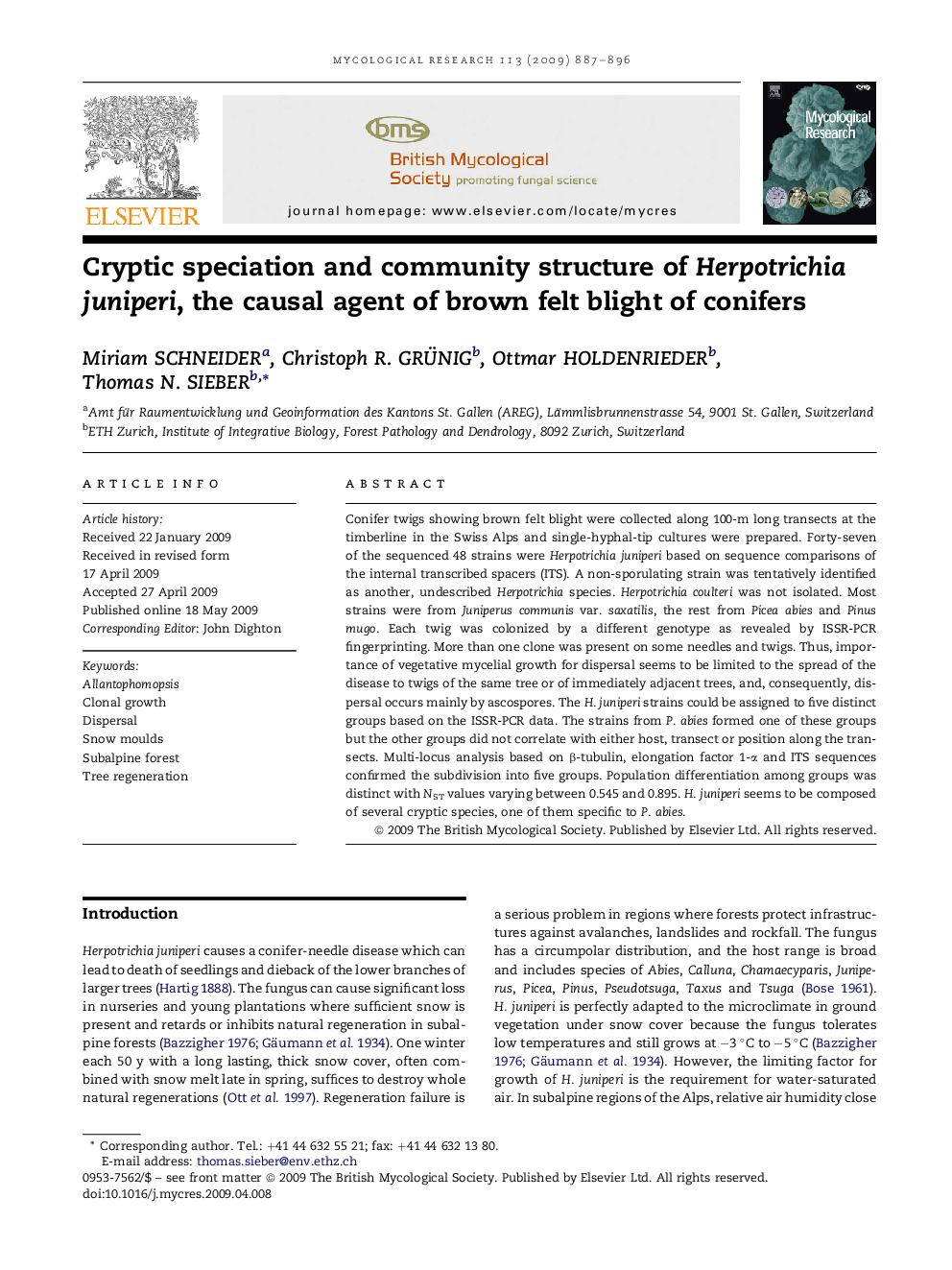| کد مقاله | کد نشریه | سال انتشار | مقاله انگلیسی | نسخه تمام متن |
|---|---|---|---|---|
| 4357536 | 1300090 | 2009 | 10 صفحه PDF | دانلود رایگان |
عنوان انگلیسی مقاله ISI
Cryptic speciation and community structure of Herpotrichia juniperi, the causal agent of brown felt blight of conifers
دانلود مقاله + سفارش ترجمه
دانلود مقاله ISI انگلیسی
رایگان برای ایرانیان
کلمات کلیدی
موضوعات مرتبط
علوم زیستی و بیوفناوری
علوم کشاورزی و بیولوژیک
علوم کشاورزی و بیولوژیک (عمومی)
پیش نمایش صفحه اول مقاله

چکیده انگلیسی
Conifer twigs showing brown felt blight were collected along 100-m long transects at the timberline in the Swiss Alps and single-hyphal-tip cultures were prepared. Forty-seven of the sequenced 48 strains were Herpotrichia juniperi based on sequence comparisons of the internal transcribed spacers (ITS). A non-sporulating strain was tentatively identified as another, undescribed Herpotrichia species. Herpotrichia coulteri was not isolated. Most strains were from Juniperus communis var. saxatilis, the rest from Picea abies and Pinus mugo. Each twig was colonized by a different genotype as revealed by ISSR-PCR fingerprinting. More than one clone was present on some needles and twigs. Thus, importance of vegetative mycelial growth for dispersal seems to be limited to the spread of the disease to twigs of the same tree or of immediately adjacent trees, and, consequently, dispersal occurs mainly by ascospores. The H. juniperi strains could be assigned to five distinct groups based on the ISSR-PCR data. The strains from P. abies formed one of these groups but the other groups did not correlate with either host, transect or position along the transects. Multi-locus analysis based on β-tubulin, elongation factor 1-α and ITS sequences confirmed the subdivision into five groups. Population differentiation among groups was distinct with NST values varying between 0.545 and 0.895. H. juniperi seems to be composed of several cryptic species, one of them specific to P. abies.
ناشر
Database: Elsevier - ScienceDirect (ساینس دایرکت)
Journal: Mycological Research - Volume 113, Issue 8, August 2009, Pages 887-896
Journal: Mycological Research - Volume 113, Issue 8, August 2009, Pages 887-896
نویسندگان
Miriam Schneider, Christoph R. Grünig, Ottmar Holdenrieder, Thomas N. Sieber,